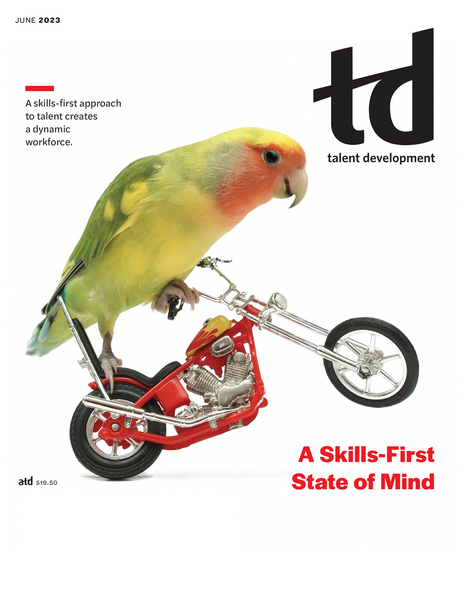TD Magazine Article
Change Up How You Change
How do L&D professionals gain buy-in and focus from employees to learn about even more change ahead?
Thu Jun 01 2023

The Situation
We've heard quite a lot about Zoom fatigue. But there's another all-too-common workplace phenomenon these days: change fatigue.
When faced with learners who have undergone changes in technology, department structure, or where they work, how do L&D professionals gain buy-in and focus from employees to learn about even more change ahead?
The Trick
Helping learners begins well ahead of the classroom. Instructional designers and facilitators can acknowledge that change is hard and that the current change is likely not the last one that employees will face.
Reconsider how you create learning materials. L&D professionals aren't immune to change fatigue. To keep from getting overextended with updating content frequently, instructional designers can start by using agile design. Brainstorm with L&D teammates on how to create better, faster content. Think through strategies that will enable you to swap out material as changes require.
Consider how you will introduce and offer training. How are you going to communicate the change or the need for training? Do learners need the standard, one-day training that L&D has always provided? Could it be a demonstration video instead? Is there an option for learners to test out of at least part of the training? Just because there is a developmental need doesn't mean you can't change the learner experience.
Name the elephant in the room. Rather than immediately launching into the topic at hand, it can be beneficial for facilitators to allow learners time to air their frustrations or other feelings about the amount of change they've taken on. Also, explain why and how the change will be helpful to them and their work.
Build resilience muscle. Encourage learners to reflect on how they've managed change in the past and leverage what worked well for them.
Pro tip
If you have a supporter among employees, take advantage of that person's positive energy to help other learners. Not only can that individual's spirit be contagious, such as getting other employees enthusiastic about learning, but the fact that they are a colleague offers something that you may not be able to provide as the L&D change messenger.
Source: Nikki O'Keeffe, Program Manager, Facilitator Development, ATD Education

